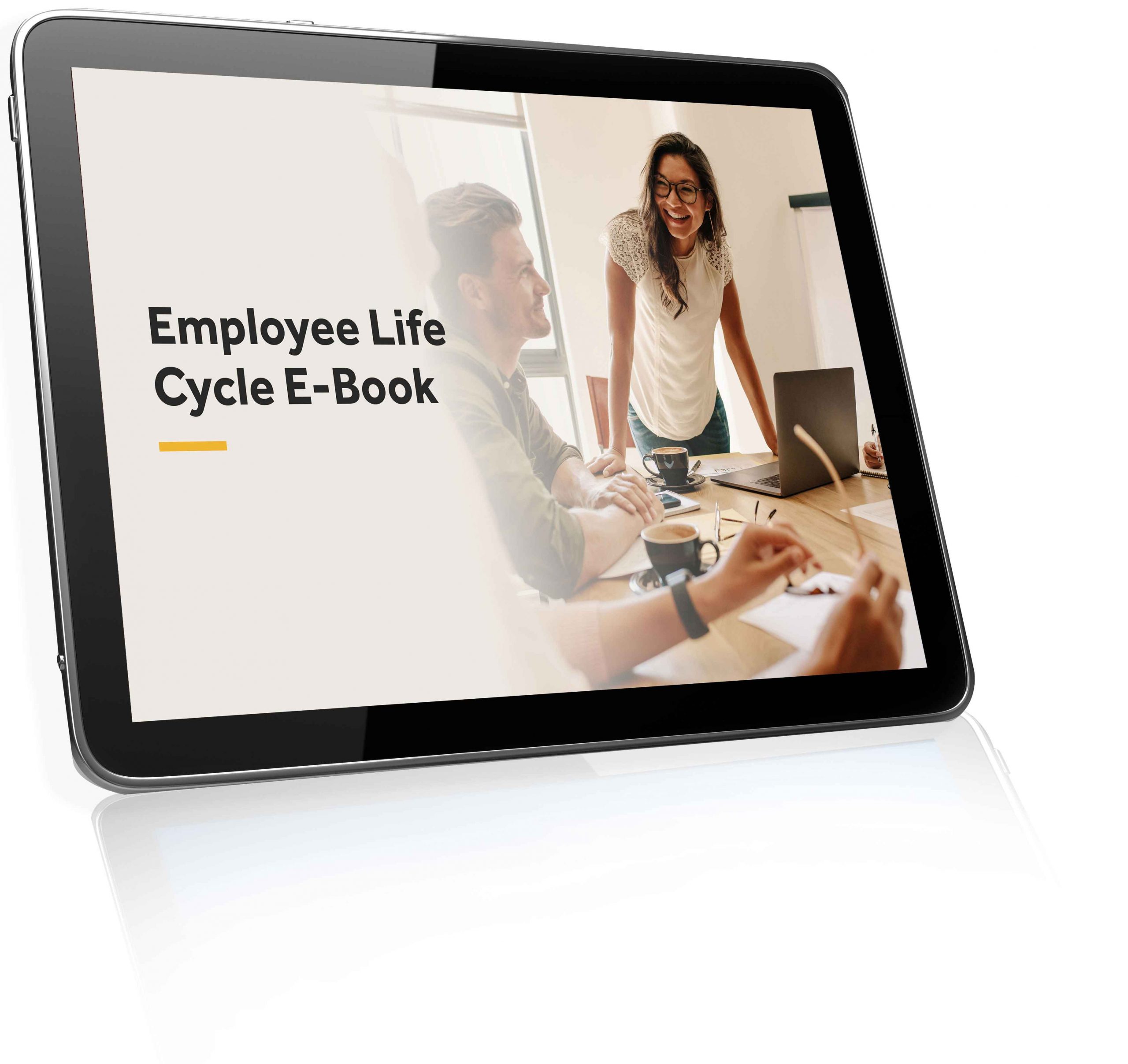
What is a secondment?
A secondment is a temporary arrangement between an employer and employee that allows the employee to work within a different department, or with a different company completely. Secondments enable employees to add to their skill set and experience, while helping employers to fill vacant roles. Secondments can last for any amount of time, but they are typically 6 to 12 months in length.
How do secondments work?
Most secondments are considered either ‘formal’ or ‘as needed’, with each type working in different ways. Let’s take a closer look at both.
Formal secondment programs
Some employers have formal secondment programs that allow employees to apply for temporary positions in other departments or organisations. These programs are typically designed to help employees develop new skills, gain experience in different roles, and network with other professionals.
To participate in a formal secondment program, employees normally need to submit an application and be interviewed by the seconding employer. If an employee is accepted into the program, they will sign a secondment agreement that outlines the terms of the secondment, including the start and end dates, role and responsibilities, salary and benefits, and arrangements for returning to an original department or employer.
As needed secondments
Other employers use secondments on an as needed basis to fill temporary staffing needs or to give employees the opportunity to work on specific projects. For example, an employer may second an employee to another business to help with a merger or acquisition.
As-needed secondments are often arranged through discussions between the seconding employer and the receiving employer, with both parties agreeing on the terms of the secondment before an appropriate employee is identified.
Why do employers offer secondments?
There are several reasons why Australian employers may consider offering their staff secondments:
To develop employee skills and knowledge: Secondments can be a great way for employees to develop new skills and knowledge that can be valuable in their future careers. For example, an employee could be seconded to a role in a different department or to a role in a different organisation.
To fill a skills gap: Secondments can be a way to fill a skills gap in the organisation, particularly for roles that require specialised or niche skills. For example, an employer could second a software engineer with a specific coding skill set to another organisation that’s building a new website.
To manage workload: Secondments can be a way to manage workload during busy periods or to cover for staff shortages. For example, an employer could second an employee from one department to another to help with a particular project.
To provide career development opportunities: Secondments can be a valuable career development opportunity for employees. For example, an employee could be seconded to a leadership role or to a role in a different industry.
What are the benefits of secondments for employers?
There are numerous benefits of secondments for employers, including:
Access to new skills and expertise: Secondments can provide employers with access to new skills and expertise that they may not have in-house. This can be particularly beneficial for small businesses or businesses that are operating in rapidly changing industries.
Increased employee engagement and motivation: Secondments can boost employee engagement and motivation by giving employees the opportunity to learn new things and work on new projects. When employees are challenged and engaged, they are more productive and more likely to stay with the company.
Improved succession planning: Secondments can be a way to identify and develop future leaders. By giving employees the opportunity to take on new challenges and work in different roles, employers can assess their potential and identify those who are ready to make the jump up to more senior positions.
Reduced costs: Secondments can be a more cost-effective way to bring in new skills and expertise than hiring new employees. Employers do not have to pay the seconding employer a fee for the employee’s services, and they do not have to worry about the costs associated with recruiting and onboarding a new employee.
Relationship and brand building: Secondments can also help employers to build valuable relationships with other organisations. Plus, employees on secondment with other companies can act as ambassadors for their current employers, helping to strengthen its brand.
What are the benefits of secondments for employees?
There are also a range of benefits of secondments for employees, including:
Opportunity to develop new skills and knowledge: Secondments can provide employees with the opportunity to develop new skills and knowledge that can be valuable in their future careers.
Exposure to new environments and opportunities: Secondments can give employees the opportunity to work in new environments and on new projects. This can help them to expand their horizons and gain a better understanding of the industry.
A low-risk way to sample a new role: A secondment offers employees the chance to try out a new role. If it proves to be a good fit, the employee can pursue a permanent position. If it doesn’t, they can simply return to their original role.
Increased visibility and networking opportunities: Secondments can help employees to increase their visibility within the organization and to expand their networks. This can lead to new opportunities for advancement and career development.
Enhanced work-life balance: Secondments can sometimes offer employees the opportunity to improve their work-life balance. For example, if an employee is seconded to a role that is closer to their home, they may be able to reduce their commuting time.

Is your employee lifecycle optimised?
Attract great staff, retain employees and improve productivity in your business by having an effective system to navigate the employee lifecycle. Download our E-Book to learn about building an engaging employee lifecycle today.
Download our FREE Employee Lifecycle E-Book today!
Examples of successful secondments
Are you struggling to envisage what a successful secondment might look like? Here are 5 examples of successful secondments, using specific roles and skills:
Example 1:
Role: Software engineer
Skills: Software development, programming languages, cloud computing
Seconding employer: Small business developing a new software product
Receiving employer: Large technology company
Outcome: The employee developed new skills in cloud computing and software development. The receiving employer was able to use the employee’s skills to improve the development of their new software product.
Example 2:
Role: Data scientist
Skills: Data analysis, machine learning, data visualization
Seconding employer: Small business selling e-commerce products
Receiving employer: Large e-commerce company
Outcome: The employee developed new skills in machine learning and data visualisation. The receiving employer was able to use the employee’s skills to improve their customer targeting and product recommendation algorithms.
Example 3:
Role: Project manager
Skills: Project management, team leadership, stakeholder management
Seconding employer: Government agency
Receiving employer: Non-profit organisation
Outcome: The employee developed new skills in stakeholder management and project management. The receiving employer was able to use the employee’s skills to successfully deliver a complex project. The seconding employer used social media coverage of the employee’s non-profit work to boost its reputation.
Example 4:
Role: Marketing manager
Skills: Marketing strategy, digital marketing, social media marketing
Seconding employer: Small business selling sustainable fashion products
Receiving employer: Large fashion retailer
Outcome: The employee developed new skills in digital marketing and social media marketing. The receiving employer was able to use the employee’s skills to increase brand awareness and sales.
Example 5:
Role: Human resources manager
Skills: HR strategy, talent management, employee relations
Seconding employer: Startup company
Receiving employer: Large multinational corporation
Outcome: The employee developed new skills in talent management and employee relations. The receiving employer was able to use the employee’s skills to improve their HR practices and to attract and retain top talent.
These are just a few examples of successful secondments. Secondments can be beneficial for employers and employees in a wide range of industries and roles. For everybody involved, it’s a win-win.
How to structure a secondment
When structuring a secondment, it is important to consider the needs of all parties involved, including the seconding employer, the receiving employer, and the employee. The following steps can be helpful:
Identify the purpose of the secondment: What are the goals and objectives of the secondment? What do the seconding employer, the receiving employer, and the employee hope to achieve?
Select the right employee for the secondment: The employee should have the skills and experience required for the role, and they should be motivated and willing to undertake the secondment.
Set the secondment expectations: Make sure that the employee, the seconding employer, and the receiving employer all have clear expectations about the employee’s role and responsibilities during the secondment.
Negotiate the terms of the secondment agreement: The secondment agreement should be in writing and should clearly set out the terms of the arrangement, including the start and end dates of the secondment, the employee’s salary and benefits, and the arrangements for the employee’s return to their original role.
Communicate clearly with the employee: Make sure that the employee understands the purpose of the secondment, the terms of the secondment agreement, and their rights and obligations during the secondment.
Manage the secondment effectively: This includes providing regular communication and support to the employee, ensuring that the employee is meeting the expectations of the receiving employer, and addressing any challenges that may arise.
Facilitate a smooth transition back to the original role: At the end of the employee’s secondment, work with the employee to ensure a smooth transition back to their original role.
Take feedback: Make sure you speak to the employee about the secondment experience and take notes. Feedback will help you identify ways that you can improve your secondment process for other staff members in the future.
Legal considerations for Australian employers
There are some important employment law considerations for Australian employers placing an employee on secondment, including:
The employee’s consent: An employer cannot unilaterally place an employee on secondment. The employee must agree to the secondment and to the terms of the secondment agreement.
The employee’s employment contract: The secondment agreement should not vary the employee’s employment contract without the employee’s consent. Any changes to the employee’s contract must be in writing and signed by both parties.
The employee’s rights and entitlements: The employee must retain all of their rights and entitlements under their employment contract during the secondment, including their right to wages, leave, and superannuation.
Work health and safety: The receiving employer has a duty to provide the employee with a safe working environment and to ensure that the employee is not exposed to any health or safety risks.
Discrimination: The employer must not discriminate against the employee on the basis of their secondment status.
Intellectual property: The ownership of any intellectual property created by the employee during the secondment should be agreed upon in advance between the seconding employer and the receiving employer.
In addition to the above, employers should also be aware of any specific requirements that may apply to their industry or sector. For example, employers in the financial services industry may be subject to additional regulations regarding secondments.
Employers are advised to seek legal advice before seconding an employee to ensure that they are complying with all of their legal obligations.
By following the tips in this guide, employers can help to ensure that secondments are a positive and successful experience for all parties involved.
Over 30,000 businesses trust Employsure to support them with their employment relations obligations. If you’re struggling with yours, we’re here to help. Call our FREE 24/7 Advice Line now on 1300 651 415 to get all your difficult HR questions answered.



